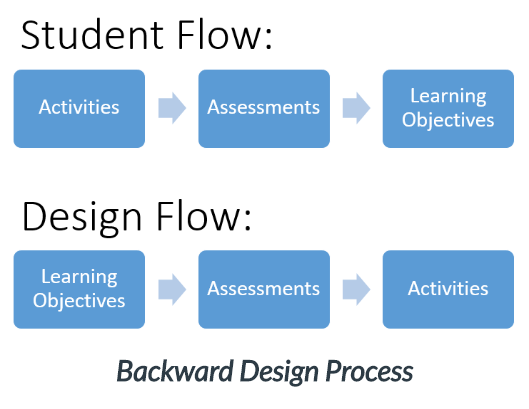Backward Design
As you design learning units, keep in mind how effectively learning objectives, activities, and assessments are aligned. Are these elements performing as you desire? The backward design process can help you work through aligning learning objectives, assessments, and activities. The term and concept of backward design as applied to course design were made popular by Jay McTighe and Grant Wiggins. in their book titled Understanding by Design.
Backward design is a simple framework that suggests we should work backward from the results we wish to observe in our students. Students access a learning unit first via activities for preparation then move to assessments for evaluation in order to demonstrate achievement of the learning objectives. In backward design, the designer/teacher ensures a logical and effective process by reversing this flow.
As you design your learning unit, ask yourself these questions:
- What do I want my students to learn? (Learning Objectives)
- How will I know if they achieved the objectives? (Assessments)
- What must students do in order to achieve the objectives? (Activities)


